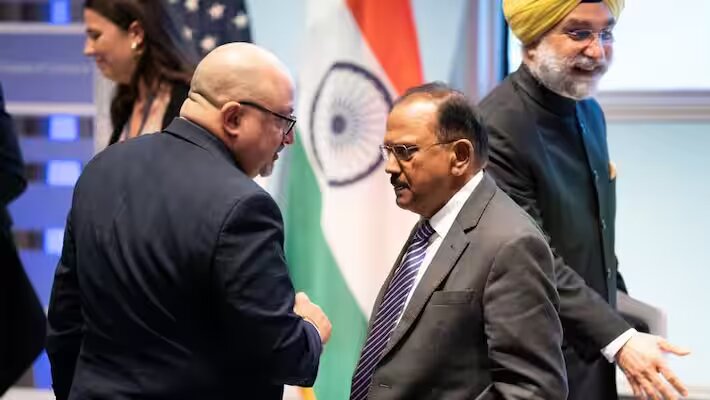India and the US reach agreement on a roadmap for joint defence industrial cooperation at ICET.
The US government has also said that it will try to get rid of existing export controls, including by working with the US Congress, in order to make it easier to follow the road map.
In order to strengthen the technology and defence industrial partnership between India and the United States (US), the two countries have agreed to a new bilateral defence industrial cooperation road map. This will speed up defence tech cooperation for joint development and production, and a new innovation bridge will connect Indian and US defence start-ups.
The US administration has also said it will try to get rid of existing export controls, including by working with the US Congress, so that the road map can be carried out.
The two countries will also strengthen their innovation ecosystems in the field of artificial intelligence, set up a joint India-US quantum coordination mechanism, work together to set standards and benchmarks for AI in technical bodies, set up a taskforce on semiconductor manufacturing collaboration, strengthen cooperation in the field of space, start a new public-private dialogue on advanced telecom technologies, and increase academic collaboration.
This is one of the things that the Indian and American national security advisers, Ajit Doval and Jake Sullivan, hope to talk about at the first high-level meeting of the initiative on critical and emerging technologies (ICET) in Washington, DC.
A senior US administration official said that ICET is “unique” because of four things: the dialogue is the result of a high-level political understanding and is led by the national security councils; the issues discussed are wide-ranging; there is deep stakeholder engagement, including from the business and academic communities; and it is based on a strategic alignment. The official clarified that the mechanism isn’t meant to replace existing platforms for cooperation and dialogue, but to give them more energy.
A second administration official said that it is in the US’s strategic interest to support India’s rise as a global power and take part in it. Officials agreed that the China challenge was a key factor in shaping the mechanism and its results. “China is definitely on our minds. It has proven time and again to be a challenge for India and the world. However, it’s important to remember that this is about more than just one thing and has a lot to do with India’s rise.”
Also, ICET is about a lot more than just sharing information about technology. Jake Sullivan says that it is a platform for improving strategic and policy alignment.
The first official also pointed out that the fact that the US was putting restrictions on China’s exports while lowering barriers for India sent a clear message.
Officials from the administration said there had been open conversations about how to make the agreements work. They acknowledged that there are regulatory issues on both sides that need to be worked out. Some of the problems are laws, but both parties support the relationship, so the administration hopes that the US Congress will help get rid of them. Other problems are more related to rules and policies. But “regulatory shifts” are expected to happen if there is a strategic vision and a commitment to reaching the goals.
“The only thing that limits the conversation is people’s imagination. “It touches everything,” one official said.
